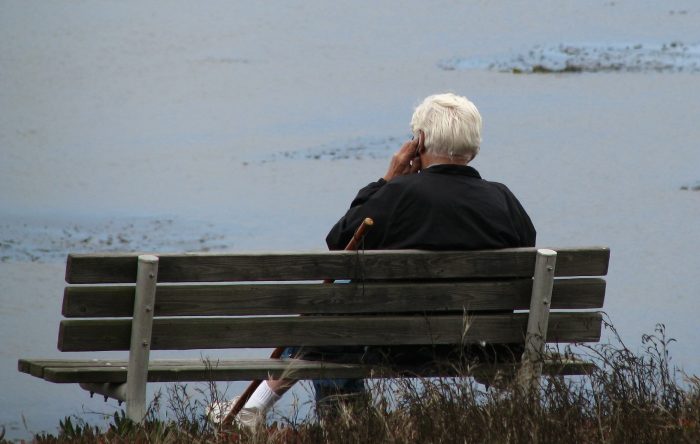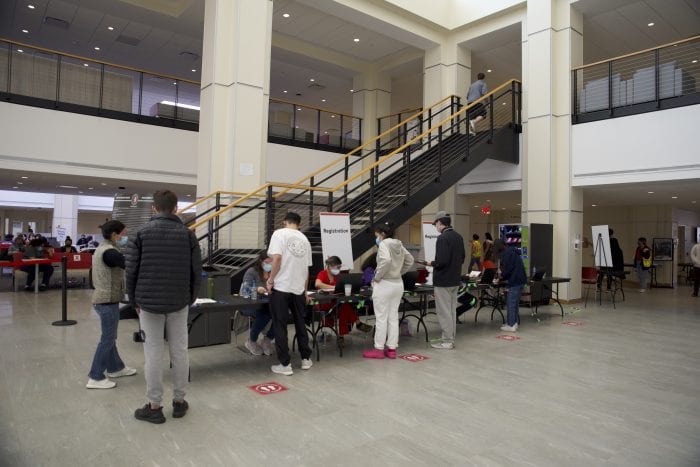By Steven Zaitz
The game of football is many things. One thing it is never supposed to be, is easy.
But that is what the Northport Tigers made these spring games look like, when they iced their fourth and final cupcake on Saturday, April 10, creaming Copiague 41-6. They finished the season 4-0 and outscored their opponents 140-25.
To an athlete, they know that while these four wins were nice, nothing worth fighting for is ever easy and the journey to greatness has only just begun.
“These kids never take a day off in their preparation,” said head coach Pat Campbell. “This is what these kids have been waiting for — this moment.”
The ‘moment’ that Campbell is referring to is a showdown with Suffolk County League IV champions West Islip on Saturday, April 17. The Lions beat Bellport 24-14 to earn that crown.
Northport is seeded second in League III and Half Hollow Hills East is first because the Thunderbirds won five games to the Tigers’ four. Hills East and Northport were supposed to play earlier this season, but the game was cancelled due to COVID-19 protocols.
Campbell is taking a “we play who is on our schedule approach” even though an argument could be made that Northport’s 4-0 Conference record should have been a factor in deciding the League champions. Hills East was 3-0 in league play and 5-0 overall.
“It is what it is,” Campbell said.
The Tiger defense, which allowed a microscopic 1.6 yards per rushing attempt this year, will have a stiff test against the Lions. They are led by breakout star quarterback Joe Constantino, who ran for 263 yards on Saturday and also threw for a touchdown.
“They run a lot of Read Option and Quarterback Power,” Campbell said. “Constantino is a really good player and probably the best runner we’ve faced. He’s got speed, he’s savvy and he’s quick. It’s going to be a challenge for us. They are a very good and well-coached team.”
West Islip also has a steam-rolling offensive line that will smash you in the mouth without hesitation, and a stingy defense that gave up about two touchdowns per game. The Lions’ storied program has a long tradition of winning and is coached by the highly respected Steve Mileti. They had a recent stretch of games that saw them win 22 out of 24 and they were undefeated this year.
“We all know the real challenges are coming up,” said running back, defensive back and co-captain Rocco Stola. “Our focus is on winning and we are super excited to play in this game against a top team. I remember playing this kid (Constantino) in junior varsity, and we know what to expect, we have a history with him, and I have full confidence in our defense that we will put a game plan together to stop him. This is the chance to prove ourselves.”
The Tigers are eager to erase both the memories of an injury-marred 2-6 season in 2019 and a bitter playoff loss the year before against North Babylon when they fumbled late in the fourth quarter, just as it looked like they were going in for a winning touchdown.
“I’ve been thinking about getting back to the playoffs ever since that loss against North Babylon,” said co-captain and leading tackler Anthony Canales. “I am really fired up for
this game.”
Another motivating factor for the Tigers is the apparent lack of respect from major regional media and social media power ranking sites, that have seemingly ignored Tiger Nation’s overwhelming success this year. Twitter prognosticator L.I. Sports Fanatic has already predicted that the Tigers will fall to the West Islip Lions in the first round of the playoffs.
“We don’t make it on to their power rankings, but we don’t care,” said Canales, who averaged more than 10 tackles a game despite sitting out large stretches due to lopsided scores. “They can have people ranked higher than us and predict whatever they want. We like being underdogs because we know that when we get out there, we have a good chance to win.”
Northport averaged more than seven and a half yards every time their offense snapped the ball. The defense very reluctantly allowed two and a half yards per play and gave up two touchdowns all year. These numbers are absolutely staggering but despite all of that, the attention around these parts has been given to teams like Floyd, Sayville, Bellport and Lindenhurst.
Rafe Carner, Stola’s first cousin, ran for 224 yards and three touchdowns this year. They have been playing sports together most of their lives and have always enjoyed pushing each other to excel athletically and academically. Like his cousin, Carner knows what is at stake in the coming days.
“Our expectations are to win a championship and that hasn’t changed since the beginning of the year,” Carner said. “This game is going to be tough, and if we win, the next one will be even tougher, but we’re going to do everything we can to make it happen.”
In other words — things are no longer easy, and the Tigers wouldn’t have it any other way.



























